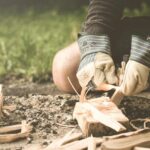In the hustle and bustle of the modern world, it’s easy to forget the ancient skills that once sustained human life. Making natural cordage and rope from plants is a prime example of a craft that has stood the test of time. Join me on a journey into the fascinating world of plant-based fibers and learn how to transform them into sturdy, reliable cordage for various purposes.
Understanding the Basics of Cordage
Choosing the Right Plants for Cordage
When delving into the art of making natural cordage, the first step is selecting the right plants. Opt for fibrous plants like (nettles), (milkweed), and (yucca), as they possess the ideal properties for crafting strong and durable cordage. The inherent strength and flexibility of these plants make them perfect candidates for this ancient skill. When venturing into the art of making natural cordage, selecting the right plants is a pivotal starting point. The success of your cordage largely depends on choosing fibrous plants that exhibit specific qualities. Let’s explore the essential factors to consider when picking the perfect plants for your cordage endeavors.
Harvesting Techniques
Once you’ve identified your chosen plants, it’s time to harvest them. Remember to harvest responsibly, ensuring the sustainability of the plants you select. Aim for plants with long, straight stalks, as these provide optimal fibers for cordage. Harvest during the right season to maximize the strength and quality of the fibers.
Crafting Process
Retting Process
Before the magic of cordage can happen, you’ll need to go through the retting process. This involves soaking the plant fibers to break down the non-fibrous tissues. It’s a crucial step that requires patience, as the fibers need time to separate and become more pliable.
Stripping and Separating Fibers
Once the retting process is complete, it’s time to strip and separate the fibers. Use a simple tool like a wooden scraper to remove any remaining non-fibrous material. This meticulous step ensures that your cordage will be free from impurities, guaranteeing strength and longevity.
Twisting and Braiding Techniques
Now comes the fun part – twisting and braiding the fibers into cordage. This step requires a bit of practice to achieve the right tension and thickness. Experiment with different twisting techniques to find what works best for your chosen plant fibers. The end result should be a flexible and robust cordage ready for a myriad of applications.
Applications of Natural Cordage
Survival Skills and Emergency Situations
In a world dominated by synthetic materials, knowing how to make natural cordage can be a valuable survival skill. Whether you find yourself in a wilderness scenario or facing an emergency, the ability to craft reliable cordage from local plants can be a game-changer.
Primitive Crafting and Hobbies
Beyond survival situations, making natural cordage opens up a world of primitive crafting and hobbies. Imagine creating your own baskets, nets, or even decorative elements using cordage crafted from plants. It’s a hands-on experience that connects you with ancient traditions and allows your creativity to flourish.
Exploring the Benefits of Natural Cordage
Eco-Friendly Alternative
One of the significant advantages of natural cordage is its eco-friendly nature. Unlike synthetic materials that contribute to environmental pollution, plant-based cordage is biodegradable and leaves minimal ecological footprint. Embracing this traditional skill aligns with sustainable living practices.
Versatility and Adaptability
Natural cordage is incredibly versatile, adapting to a range of needs. From securing shelters to crafting tools, its applications are only limited by your imagination. The adaptability of plant-based cordage makes it a valuable resource in various situations.
Challenges and Tips for Success
Overcoming Challenges
While crafting natural cordage can be rewarding, it’s not without its challenges. The weather, plant variability, and personal skill level can all impact the success of your cordage-making endeavor. Stay patient, be adaptable, and view challenges as opportunities to refine your skills.
Tips for Success
To ensure success in your cordage-making venture, start with easily accessible plants and gradually progress to more challenging ones. Practice different twisting and braiding techniques to discover which yields the best results for your intended use. Remember, mastering the art of cordage is a journey, not a destination.
Conclusion
In conclusion, making natural cordage and rope from plants is a journey back in time, connecting us with the skills of our ancestors. As we immerse ourselves in the process of harvesting, retting, and crafting, we not only create functional cordage but also gain a deeper appreciation for the simplicity and sustainability of ancient techniques. So, gather your plant fibers, embark on this timeless adventure, and discover the satisfaction of crafting your own natural cordage – a skill that transcends generations and stands as a testament to the resourcefulness of humanity. Happy crafting!







